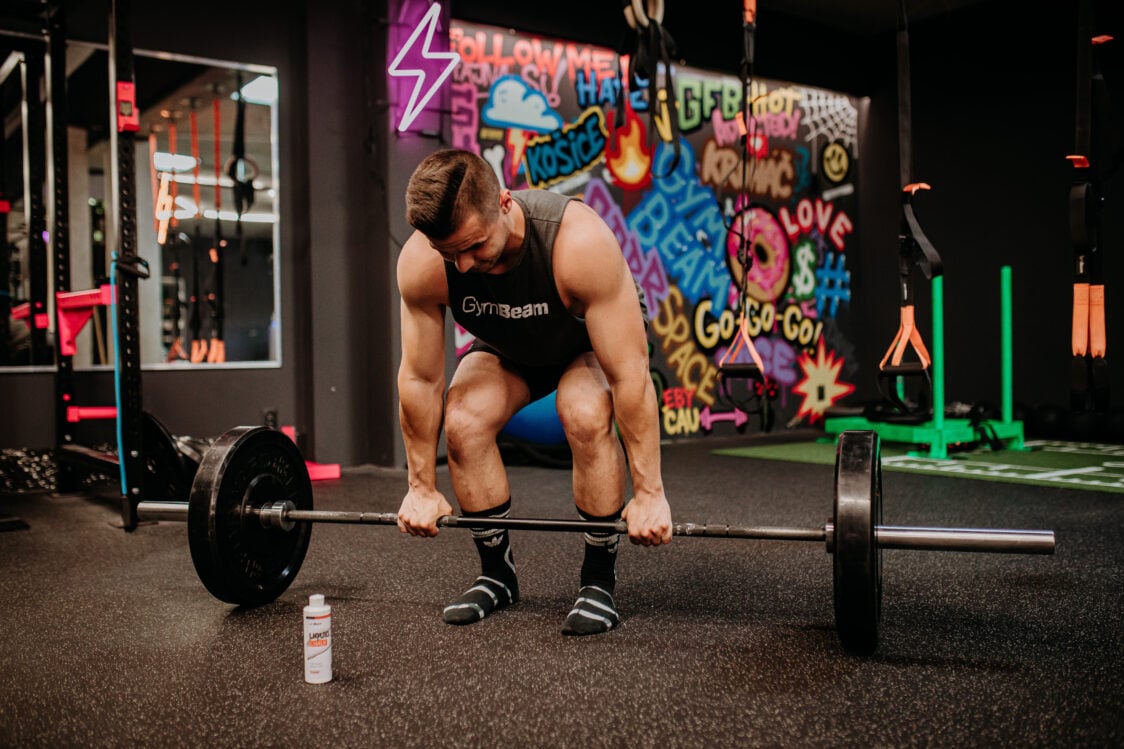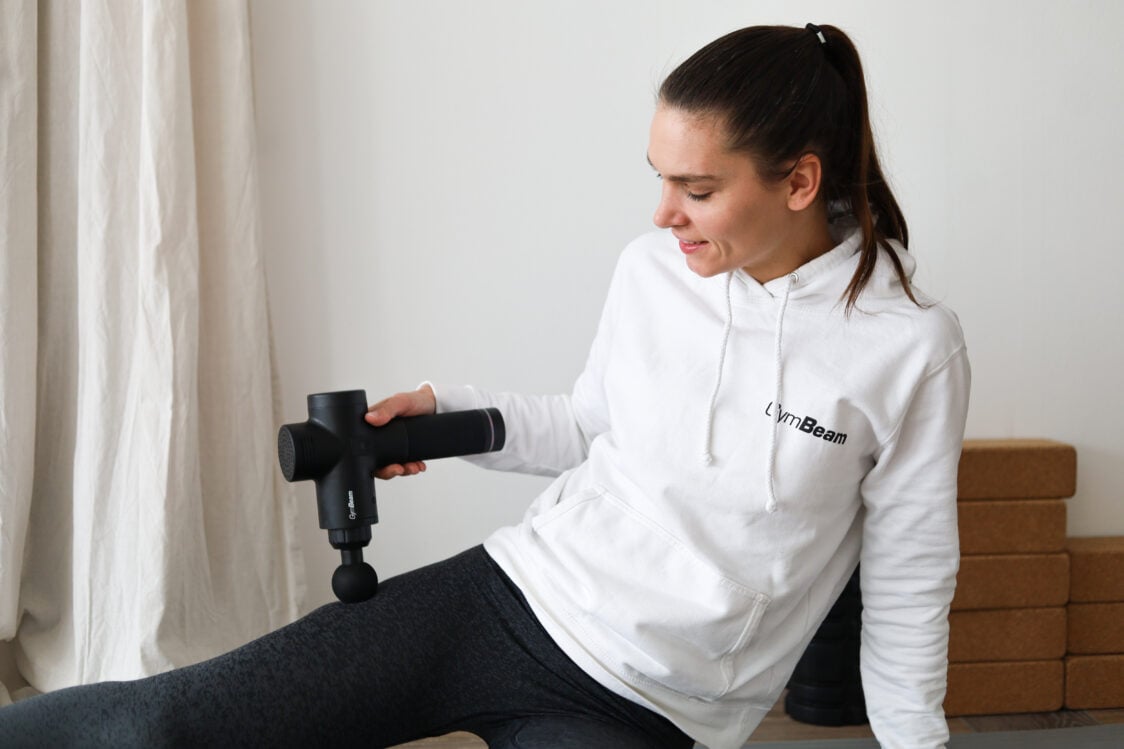Table of Contents
Almost everyone would like to change something about themselves. To have a narrower waist, smaller hips or buttocks. Women, in particular, often dream of slimmer thighs, which give them a sense of confidence even in miniskirts and shorts. They then try to achieve this with unreasonably strict diets or one thigh exercise with tens or hundreds of repetitions. However, they don’t last long with starvation and exercise, which they eventually get tired of, and give up their efforts to change their figure. Today’s article is therefore written for them and everyone else who wants to lose weight not only in the thighs. It will present the individual steps that are important on the journey towards lasting results.
Why can’t you lose weight only in the thighs?
Maybe all you need to do is lose a few inches over your thighs and you’ll be happy with your figure. Unfortunately, it doesn’t work that way with your body – you pick one area and start training it more, and the fat on it starts to disappear like with a magic wand.
Whether you want to lose weight on your thighs, buttocks or stomach, a comprehensive approach is always important. This entails adjusting your diet and training so that your energy expenditure exceeds your intake, putting you in a calorie deficit. This leads to an overall reduction in body fat percentage, which will result in gradual weight loss. Whether the fat on your belly, buttocks or thighs starts disappearing sooner is mainly determined by your genetics and your body’s hormonal environment.
Properly selected exercises will subsequently help you firm and shape your thighs. However, you can’t expect to have them the same as a world-class model or fitness influencer. Moreover, social networks are full of edited photos and quite often do not reflect reality. To track your body changes, the best thing you can do is to compare your results to your self a month or a year ago.
In the event that your goal is to lose weight and you want to learn how to do it step by step, read our article Simple Weight Loss Basics: You’ll Be Amazed at What’s Really Important.

How to improve your diet for weight loss and sculpting of the thighs?
There should be extreme dieting, cutting out gluten, carbohydrates or straight up starvation on your journey to slim thighs. Instead, follow the tips below to set your optimal calorie intake and macronutrients for gradual weight loss.
1. Set an optimal calorie intake
You only start losing weight when your energy expenditure (basal metabolism, general daily movement, sport) exceeds your energy intake (diet, drinks, supplements). Your body then reaches for its own energy reserves and starts burning body fat. This puts you in a calorie deficit. But how many calories should you eat to achieve this? This is a question of basal metabolic rate, exercise and other normal activities in which you use energy. Our energy intake and macronutrient calculator will help you set your optimal calorie intake for weight loss.
Then try to follow this calculated calorie intake for a few weeks and then evaluate how it suits you and whether you are seeing any results. Nutrition apps like MyFitnessPal can help you control your calorie intake. The average healthy weight loss rate is 0.5-1 kg per week. [1]
- If you feel like you’re starving yourself and losing weight too quickly, increase your calorie intake by about 5-10%.
- If, on the other hand, you find yourself stagnating, try reducing your calorie intake by 5-10%.
Practical tips to help you manage your calorie deficit can be found in our article Calorie Deficit: How to Lose Weight and Have a Life of Your Own?

2. Choose appropriate sources of protein, fat and carbohydrates
The calculator will calculate not only your energy intake, but also the basic macronutrients, i.e. proteins, carbohydrates and fats. Each of them has an important role in the body in terms of health, but also weight loss.
- Protein will help protect and build muscle mass while better managing a caloric deficit because it has the highest satiating power.
- Carbohydrates provide energy for training and everyday functioning, and they are also good sources of fibre, which also helps with satiety.
- Fats, in turn, help maintain a balanced hormonal environment, which is also crucial for weight loss. When planning your diet, focus on quality sources of these nutrients. Common, minimally processed foods should take precedence.
Suitable sources of macronutrients
- Protein: meat and meat products, fish, eggs, dairy products, tempeh, tofu, seitan, protein.
- Carbohydrates: wholemeal bread, rye bread, pasta, wholemeal flour, cereals (rice, quinoa, couscous, bulgur), oatmeal, buckwheat porridge, vegetables, fruit, legumes.
- Fats: vegetable oils (olive, rapeseed, avocado, pumpkin), nuts and seeds, nut butters, ghee.
In addition to quality food, the practical tips in our article 10 Tips to Help You Lose Weight and Get In Shape can also make your diet planning easier.

3. Limit processed foods and sweetened beverages
On the other hand, try to limit industrially processed foods, such as various salty snacks (chips, etc.), fast food, sweets, cakes, pastries (croissants), biscuits, chocolates, fatty sausages, etc. These foods contain a large amount of energy in small quantities and are poor in protein, fibre, vitamins and minerals. They will probably make you hungry again soon, so you will eat more food than usual, delaying your weight loss. But if you enjoy the occasional square of good quality dark chocolate or other small sweet treat, that’s okay.
Similarly, beware of sugary drinks and alcohol, which in turn provide unnecessary calories. Rather, base your fluids intake on unsweetened beverages (plain water, tea, coffee). In addition to lemon juice and herbs, you can also flavour your water with BCAA powder for variety.
Find out which other drinks can ruin your weight loss in our article Where are Liquid Calories Lurking and How Are They Hindering Your Weight Loss?

4. Try out appropriate supplements
While fat burners and other weight loss supplements are not miracle pills that will make the weight come off on its own, they can help make the process easier and faster.
- Fat burners: they have an effect on metabolism and can increase energy expenditure at rest, but especially during sports activities. These include caffeine, synephrine, l-carnitine or multi-ingredient complex fat burners such as FueBurn or BeastBurn, which contain multiple active ingredients.
- Fibre: helps fill the stomach and prolong satiety. Try psyllium, glucomannan, chitosan, or the 5-fibre complex Daily Fiber.
- Appetite-reducing supplements: these supplements can reduce cravings for both sweet and salty snacks and help you better manage your calorie deficit. Chromium, white bean extract or multi-ingredient Appetite Control are popular.
You can read about other active ingredients that can make the whole process easier in our article Dietary Supplements for Weight Loss: Which Ones Will Help Burn Fat or Satiate?
You might be interested in these products:
Set up a training plan that will bring about results
A modified diet is best supported by appropriate exercise in the form of comprehensive weight training and cardio training. Exercises for the front, back and inner thighs will help you firm and shape them. Running or other cardio will help you burn extra calories and promote weight loss.
1. Incorporate a variety of effective thigh exercises
You don’t have to worry that your legs will grow to giant proportions due to weight training. Unless you have a genetic predisposition for large muscle growth in this area, strength training will reward you with firm and nicely shaped thighs. In addition, weight training will give you more muscles that are metabolically more active than fat, which in turn leads to more calories burned. These will be burned to a greater extent even 24–72 hours after your workout thanks to regenerative processes. Exercising with your own weight or dumbbells will also support weight loss. [2-3]
- Incorporate thigh exercises into your training plan 2–3 times a week.
- Choose 3–6 exercises from the table.
- Try to combine exercises for the front, back and inner thighs for overall strengthening of this section.
- Then perform these in 8–12 repetitions and 2-4 working sets. [5]
- In the case of exercises with your own weight or a resistance band, you can increase the number of exercises and repetitions.
However, as part of a comprehensive body workout, be sure to add upper body exercises including your shoulders, arms, back and abs to your training plan. You can alternate exercises with your bodyweight, dumbbells, kettlebells and barbells. Keep in mind, however, that progress is best achieved by gradually increasing the total load, using the principle of progressive overload.
Primarily loaded muscles of the thighs | Exercises |
|---|---|
| Front side of thighs (quadriceps) | Front squat, leg extensions, goblet squat, sissy squat, Bulgarian squat, leg press, forward lunge, deadlift, single leg squat. |
| Back side of thighs (hamstring) | Leg curls on a machine or on a bench with a dumbbell, Romanian deadlift, hyperextension, kettlebell swing, hamstring curl with a fit ball. |
| Inner thighs | Sumo squat, plié squat, sumo deadlifts, side lying leg raises, kneeling and standing leg raises (with a resistance band, on a pulley), lateral band walk, side lunges, squeezing the Pilates ring between the thighs lying on the side, abduction and adduction on the machine. |
If you also want to work on your glutes, you can find effective exercises in our article 9 of the Best Exercises for the Buttocks and Legs.

2. Add some cardio
When losing weight, cardio training is usually the number one choice. Running, brisk walking, cycling, treadmill or rowing usually burns more calories than the same amount of time spent working out. As a result, your body will use up the extra calories and you won’t have to eat that much less. The result is a boost in burning subcutaneous fat as well as sculpting the muscles you work on in the gym. Plus, when you pedal up a big hill on your bike or go for a mountain hike, you’ll also work your thigh muscles hard and make them stronger and firmer.
However, don’t overdo it with cardio training during the week either. In the beginning, it will be enough to include it 3 times a week for 30 minutes. If you’re not keen on these long-lasting activities, short interval activities such as Tabata or HIIT, for example with a skipping rope can have a similar effect. Ideally, alternate days when you have strength training and cardio.
If you want to learn more about the benefits of diet, weight training and cardio for weight loss, read our article Diet, Cardio and Strength Training. What’s Best for Weight Loss?

3. Increase energy expenditure through routine activity
You can also burn more energy through everyday activities. By getting off the bus a stop early on your way to work and walking, taking the stairs instead of the lift or interspersing your sedentary work with active breaks, you’ll increase your energy expenditure. Try to think about how to move more during the day, not just at the gym. After all, you will spend about one hour a day exercising. If you subtract eight hours of sleep, that still leaves fifteen hours in the day that should be at least partially spent being active.
You can learn more about the impact of daily physical activity on weight loss in our article What Is the Most Important Factor in Weight Loss?
Don’t forget about rest and recovery
Results will come faster if you support them with quality sleep and rest. Make it a priority to get at least seven hours of sleep a day. Also keep in mind that full muscle recovery after strength training occurs in about 24–72 hours. So rotate the areas you load during the week and plan your rest days. You don’t have to spend them on the couch, but go for a walk or do some light stretching. [4]
If you’re wondering what you can do to relieve muscle soreness after a workout, check out our article How to Boost Recovery with a Massage Gun and Other Aids?

Track results not only by the number on a scale
Throughout the whole process of body change, you should not forget to measure your progress. Even if your goal is slimmer thighs, keep an eye on the progress of your entire physique. Preferably at the same time of day, ideally in the morning after you wake up, measure the circumferences of your waist, hips, buttocks, thighs and weigh yourself once every two weeks too.
You can also track and compare your results with photos. Take a photo of yourself at the start of your journey and then once in a while (about 2–4 weeks) add another photo to your collection at the same place and time. Success is not just measured by how much you weigh. It’s also about shedding inches, feeling better about yourself and feeling more confident. The number on the scale doesn’t have to mean you’re not succeeding. If you stick with a new plan long enough, it’s only a matter of time before the results come.
What should you remember?
Any change in the body, whether it’s weight loss, healthy weight gain, or even inner thigh weight loss, needs a comprehensive approach. You simply can’t do it alone without adjusting your diet, training plan and overall lifestyle optimisation. Thanks to today’s article, you now have the know-how.
The calculator will calculate how many calories to eat for gradual weight loss, include the appropriate foods, while eliminating those that could hinder your progress. Add front squats, Romanian deadlifts, resistance band leg raises, and other effective thigh-strengthening exercises to your workout at least 2 times a week. Then support your fat burning with cardio and effective dietary supplements. If everything is backed up by quality sleep and sufficient rest, you can expect great results sooner or later.
Have you learnt anything new and beneficial? If so, don’t forget to share this article with your friends, who may also appreciate this advice.
[1] Finkler, E., Heymsfield, S. B., & St-Onge, M.-P. Rate of weight loss can be predicted by patient characteristics and intervention strategies. – https://doi.org/10.1016/j.jada.2011.08.034
[2] Miller, T., Mull, S., Aragon, A. A., Krieger, J., & Schoenfeld, B. J.. Resistance Training Combined With Diet Decreases Body Fat While Preserving Lean Mass Independent of Resting Metabolic Rate: A Randomized Trial. – https://doi.org/10.1123/ijsnem.2017-0221
[3] Gillette, C. A., Bullough, R. C., & Melby, C. L. Postexercise Energy Expenditure in Response to Acute Aerobic or Resistive Exercise. – https://doi.org/10.1123/ijsn.4.4.347
[4] Burd, N. A., West, D. W. D., Moore, D. R., Atherton, P. J., Staples, A. W., Prior, T., Tang, J. E., Rennie, M. J., Baker, S. K., & Phillips, S. M. . Enhanced Amino Acid Sensitivity of Myofibrillar Protein Synthesis Persists for up to 24 h after Resistance Exercise in Young Men. – https://doi.org/10.3945/jn.110.135038
[5] Schoenfeld, B. J., Grgic, J., Van Every, D. W., & Plotkin, D. L. Loading Recommendations for Muscle Strength, Hypertrophy, and Local Endurance: A Re-Examination of the Repetition Continuum.– https://doi.org/10.3390/sports9020032


Add a comment